#Gary Carrion-Murayari
Photo
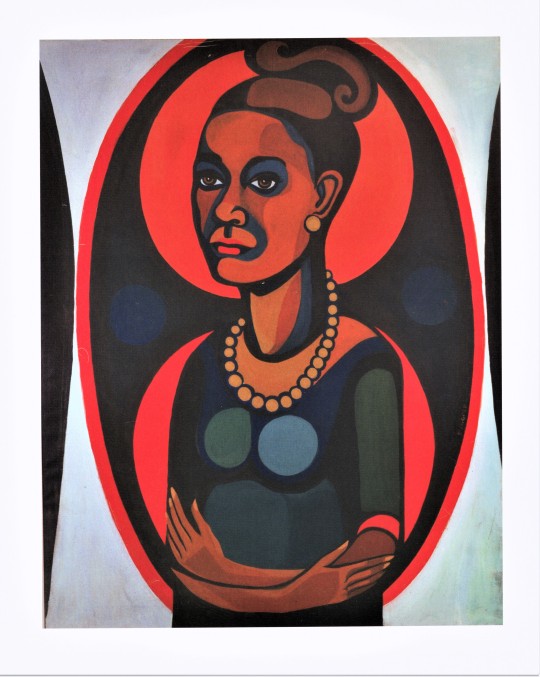
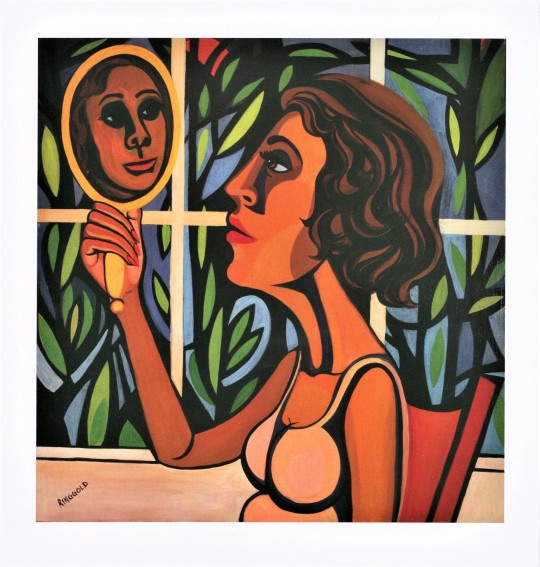
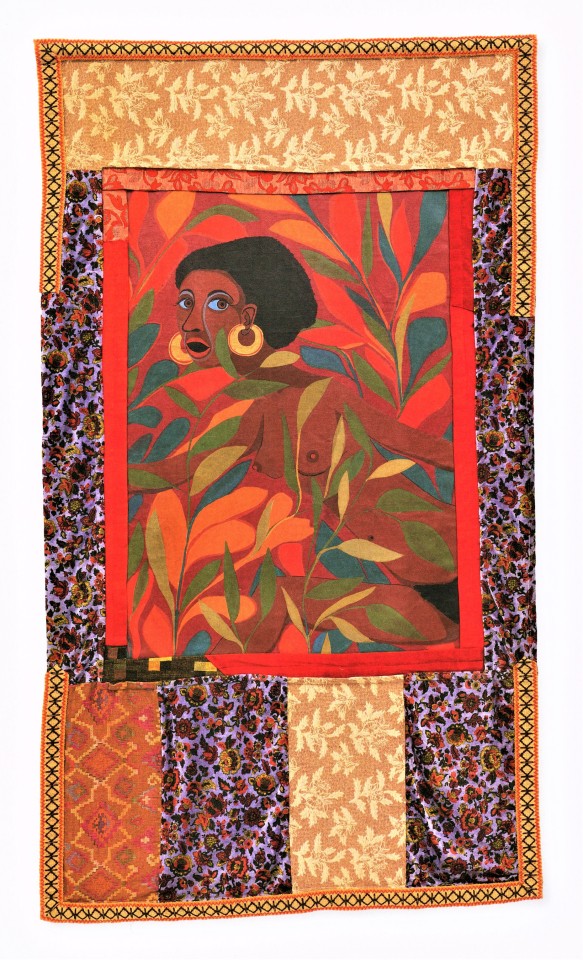
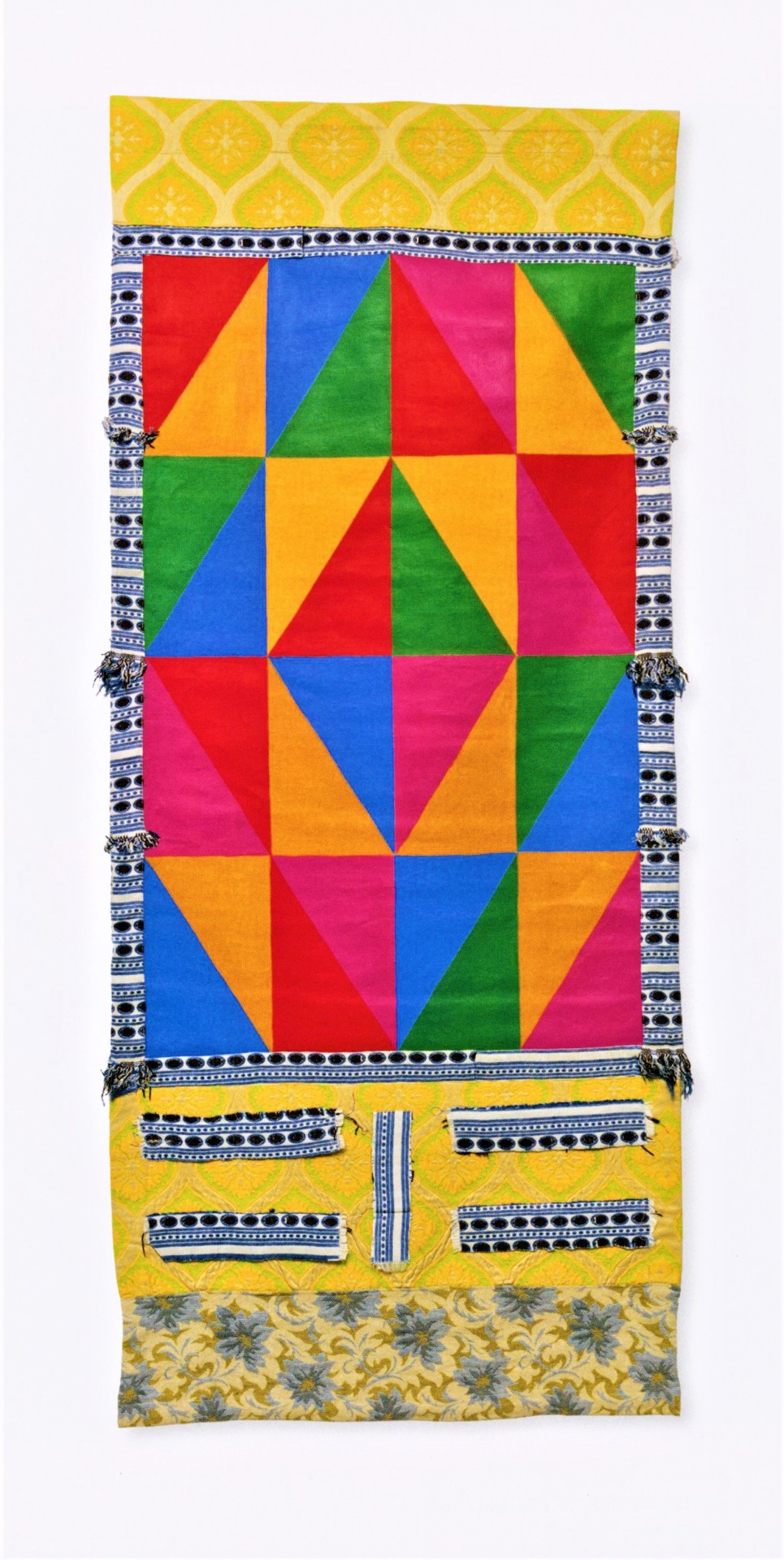
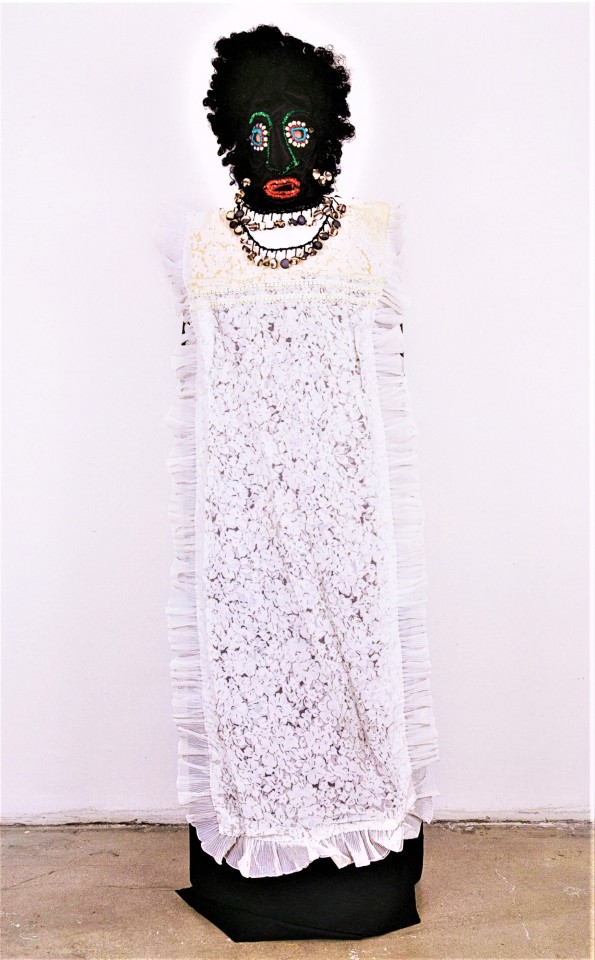
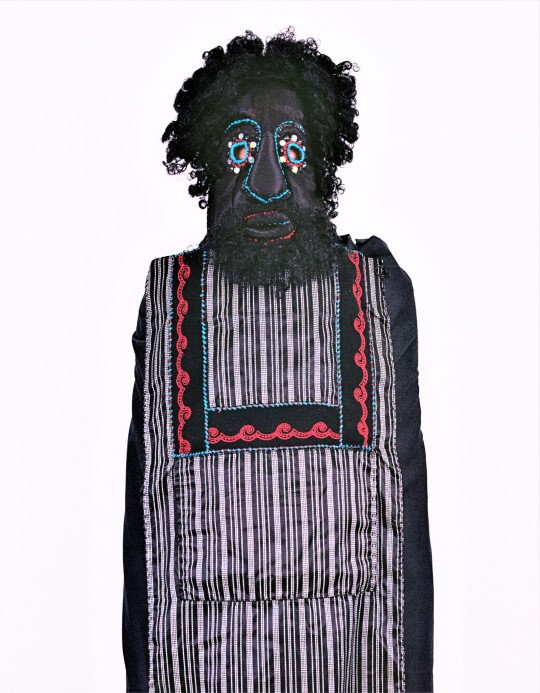

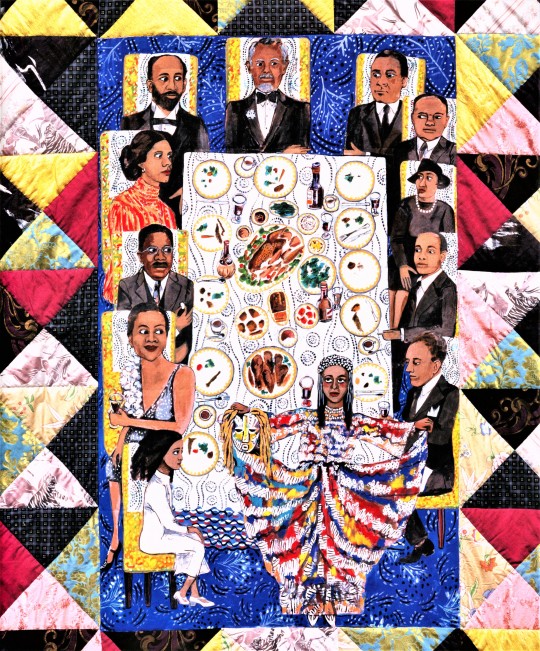
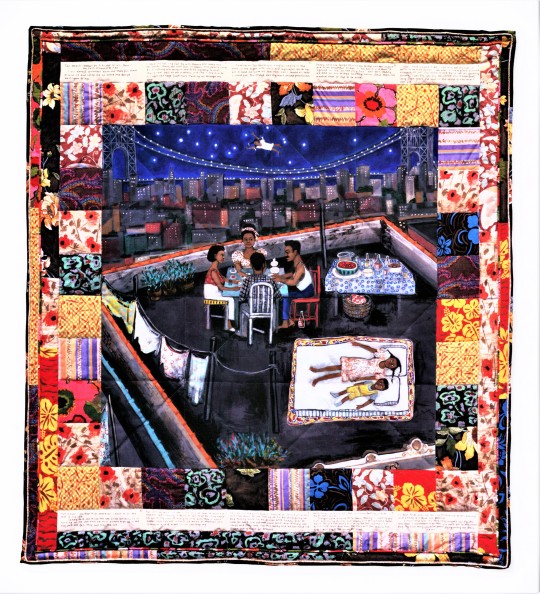

Spotlight: Faith Ringgold
92-year-old Faith Ringgold is arguably one of the most consequential African American artists of her generation, well-known for her paintings, mixed-media sculpture, performance work, and especially for her narrative quilts. A year ago, February 17, 2022, the New Museum in New York opened the retrospective exhibition “Faith Ringgold: American People,” the most comprehensive survey to date of the work of Faith Ringgold, whose groundbreaking art and political activism span more than sixty years.
These images are from the catalog of that exhibition, also titled Faith Ringgold: American People, edited by Massimiliano Gioni and Gary Carrion-Murayari and published in New York by Phaidon Press in 2022. The catalog features 11 essays by prominent writers and an interview with the artist, and covers work from all periods of Ringgold’s career, including her early civil rights-era figurative paintings, her graphic political protest posters, and her signature experimental story quilts.
Click or tap on the images for more detail.

The Flag is Bleeding #2: The American Collection #6, 1997. Acrylic on canvas with painted and pieced fabric. 76 x 79.5 in.
View more Black History Month posts.
#Black History Month#Faith Ringgold#African American artists#Black artists#African American women artists#Black women artists#women artists#Faith Ringgold: American People#exhibitions#exhibition catalogs#retrospective exhibitions#New Museum#Massimiliano Gioni#Gary Carrion-Murayari#Phaidon Press
180 notes
·
View notes
Text
AHL Foundation presents 2023 AHL-T&W Foundation Contemporary Visual Art Award Winners Exhibition
Opening Reception: Saturday, October 7, 3-5pm
AHL Foundation, a non-profit organization supporting contemporary artists of Korean descent, is proud to announce the opening of its 2023 AHL – T&W Foundation Contemporary Visual Art Awards Winners Exhibition, featuring artists Soeun Bae, Dana Davenport, and Mija Jung.
This exhibition is curated by Gary Carrion-Murayari, Kraus Family Curator at the…

View On WordPress
0 notes
Photo

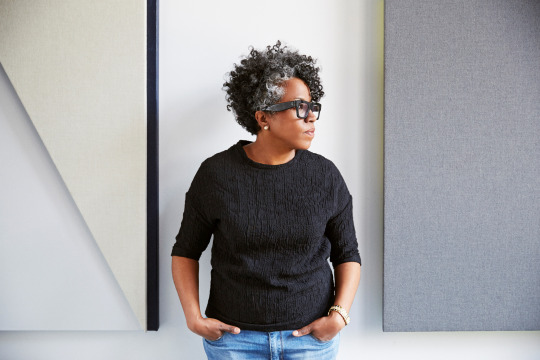
Jennie C. Jones (A ‘96, F ‘14)
Jennie C. Jones in Conversation with Gary Carrion-Murayari
New Museum
April 26, 4pm EDT
3 notes
·
View notes
Photo

Amazing @nariward! “We the people” is curated by Gary Carrion-Murayari, Kraus Family Curator; Massimiliano Gioni, Edlis Neeson Artistic Director; and Helga Christoffersen, Associate Curator #newmuseum #nycity #2019 #art #installation #garicarrionmurayari #krausfamily #massimilianogioni #edlisneeson #helgachristoffersen (presso New Museum) https://www.instagram.com/p/Bw_xAwUFhtZ/?igshid=3q4bcvc9feyt
#newmuseum#nycity#2019#art#installation#garicarrionmurayari#krausfamily#massimilianogioni#edlisneeson#helgachristoffersen
1 note
·
View note
Photo
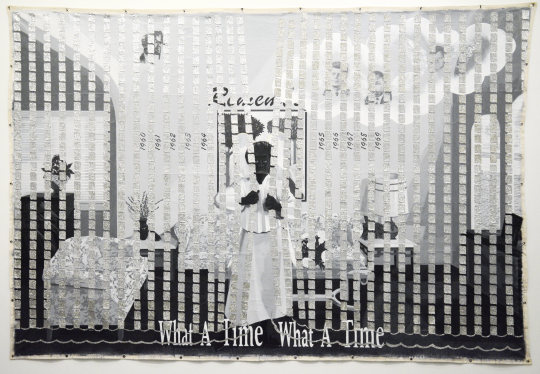

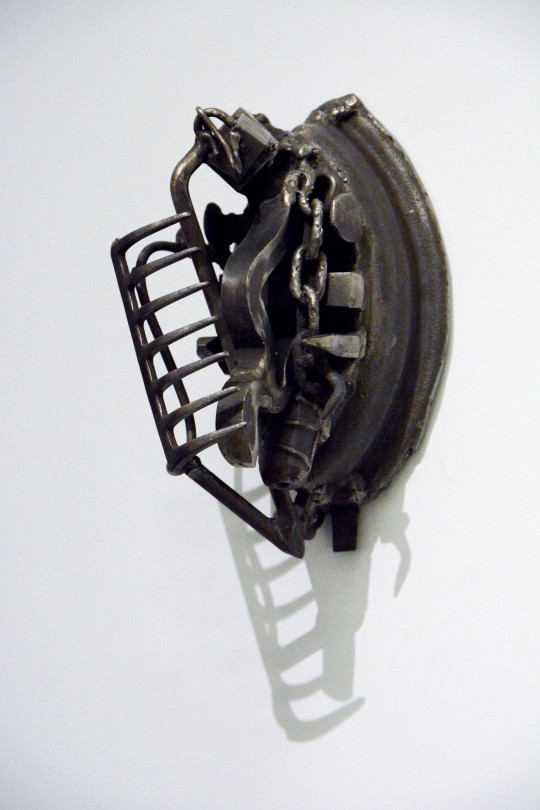
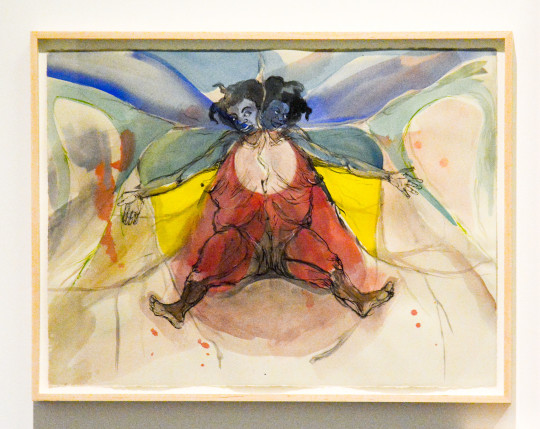
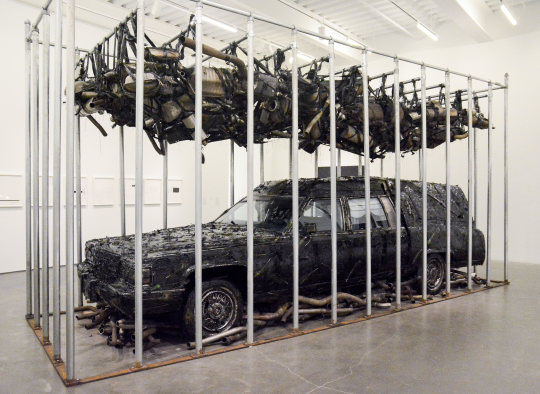
“Grief and Grievance” [Press Preview] @ The New Museum by j- No
Via Flickr:
LES Manhattan NYC Feb. 16, 2021 exhibition on show thru June 6, 2021
Opening to coincide with Black History Month, “Grief and Grievance” is an exhibition that focuses on the intersection of white nationalism and the cultural memory of Black grief as central to American life, as articulated in the work of contemporary Black American artists working in nearly every artistic medium.
The show, as conceived by the late Okwui Enwezor, was originally intended to begin prior to the 2020 U.S. presidential election, but due to the current global pandemic, the opening had to be delayed. The project was completed by Naomi Beckwith, Massimiliano Gioni, Glenn Ligon, and Mark Nash as curatorial advisors.

In Enwezor’s view, the works in this exhibition help illustrate the idea that "mourning is a practice that permeates the social, economic, and emotional realities of Black life in America as it is experienced across multiple generations", from the civil rights movement of the 1960s to issues of police violence in the United States in the 1990s and today. The works of these artists stand as proof that many of the concerns driving the current debates around race, discrimination, and violence in America and that Black grief remains a national emergency that must not be ignored.
The 37 artists included in the show include: Terry Adkins, Jean-Michel Basquiat, Kevin Beasley, Dawoud Bey, Mark Bradford, Garrett Bradley, Melvin Edwards, LaToya Ruby Frazier, Charles Gaines, Ellen Gallagher, Theaster Gates, Arthur Jafa, Daniel LaRue Johnson, Rashid Johnson, Jennie C. Jones, Kahlil Joseph, Deana Lawson, Simone Leigh, Glenn Ligon, Kerry James Marshall, Tiona Nekkia McClodden, Julie Mehretu, Okwui Okpokwasili, Adam Pendleton, Julia Phillips, Howardena Pindell, Cameron Rowland, Lorna Simpson, Sable Elyse Smith, Tyshawn Sorey, Diamond Stingily, Henry Taylor, Hank Willis Thomas, Kara Walker, Nari Ward, Carrie Mae Weems, and Jack Whitten.
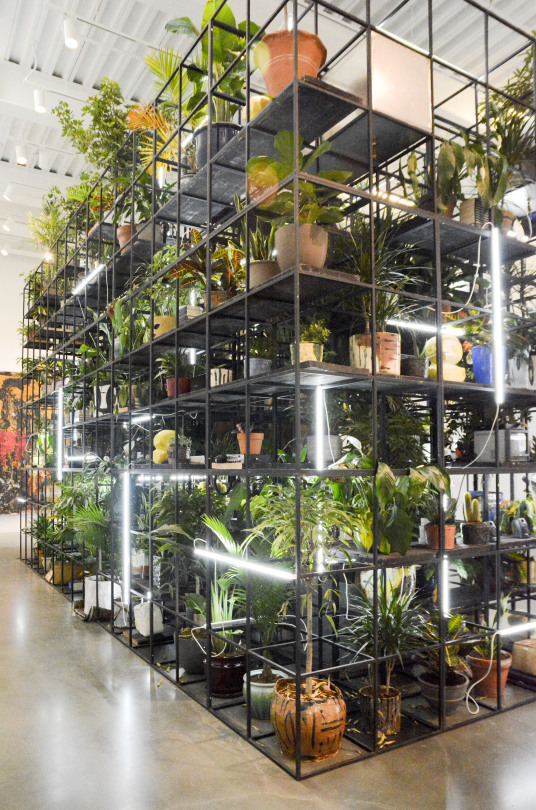
Upcoming public programs related to "Grief and Grievance," include a wide range of conversations with artists from the exhibition:
Theaster Gates in conversation with Massimiliano Gioni on February 25;
Melvin Edwards in conversation with Massimiliano Gioni on March 2;
LaToya Ruby Frazier in conversation with Margot Norton on March 12;
Kerry James Marshall in conversation with Massimiliano Gioni on March 18;
Dawoud Bey in conversation with Gary Carrion-Murayari on March 23;
Adam Pendleton in conversation with Andrew An Westover on April 1;
Hank Willis Thomas in conversation with Margot Norton on April 8;
Rashid Johnson in conversation with Massimiliano Gioni on April 15;
Tiona Nekkia McClodden in conversation with Margot Norton on May 3; with more to be announced.
Additionally, on February 24, the Museum will host “Workshop for Educators: Grief and Grievance: Art and Morning in America.” Designed for K-12 educators, this program will highlight and contextualize works in the exhibition with historic and contemporary social movements, and artists’ concerns today.
[photo credits: James Nova for NYTCAP]
1 note
·
View note
Photo
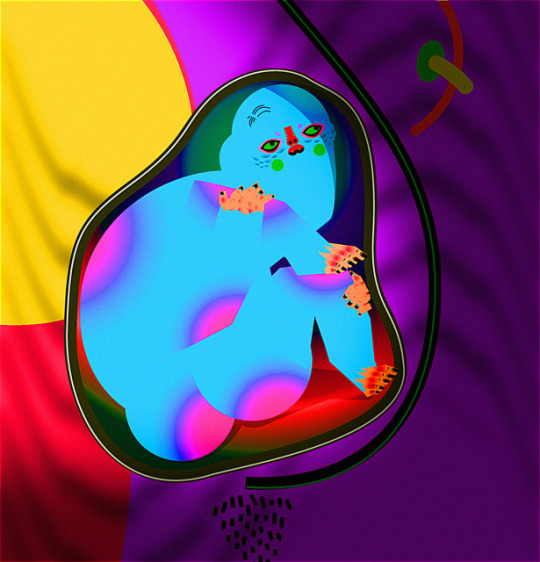
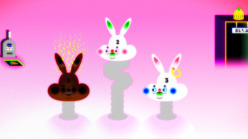
(via Wong Ping Screening and Conversation with Gary Carrion-Murayari :: New Museum)
0 notes
Text
Hans Haacke, Firebrand, Gets His First U.S. Survey in 33 Years
Anyone who knows much about the defiantly political art of Hans Haacke, filling the New Museum in New York later this month, is bound to feel anxious before meeting the famous firebrand. But when Mr. Haacke showed up for an interview at his dealer’s gallery in Manhattan, what was shocking was his quietude: In sensible sandals, roomy jeans and a staid plaid shirt, the 83-year-old New Yorker answered questions with an amiable, unflappable calm.
Asked about what seems to have been almost an embargo against him among American curators, despite his huge reputation in Europe, he replied, “before they make a move — one that is not quite the norm — they need to consider (and I don’t blame them for that) whether this is good for their personal career.”
Queried on the power of museum donors, a group he has unflinchingly confronted in his art, he replied merely that he “suspects” — and in person, Mr. Haacke never does more than “suspect”— that the power of art to affect viewers’ thinking leaves museum benefactors with “an interest in what is being shown there, and what is not going to be shown there.” And the art some donors would prefer not to see exhibited includes Mr. Haacke’s own.
“He’s just a really nice guy,” said Andrea Fraser, a peer of Mr. Haacke’s known for equally hard-nosed work. “I’ve never seen him be aggressive” — at least not in the flesh, she clarified, acknowledging the aggression in his art.
In 1971, when Mr. Haacke was about to be honored with a survey at the Guggenheim Museum, the show was canceled. Once the director learned that the art on view would include research into questionable real estate dealings, he said there was no way his museum would display such “muckraking.” He fired the survey’s curator, too. Mr. Haacke’s conceptual artwork, “Shapolsky et al. Manhattan Real Estate Holdings, A Real Time Social System, as of May 1, 1971,” made up of photographs, charts and financial histories of buildings on the Lower East Side and Harlem, remains one of his best-known pieces.
“To introduce something that deals with the social and political world that we live in — that was alien,” Mr. Haacke recalled, expressing something like understanding for the predicament he’d created for the Guggenheim. “Maybe I was naïve,” he added, “but I did not expect that this would cause problems.”
Mr. Haacke admits that the furor around the cancellation helped establish him as an art-world force, but in a rare moment of personal revelation, he also mentioned what it cost him: “It was not easy. We had a two-year-old child. I had an adjunct position at Cooper Union. I could not sell my stuff — it was hard.”
It looks like American museums have never quite forgiven Mr. Haacke for his early transgressions. It has been 33 years since his last U.S. survey — and that was also at the New Museum, when it was a much more modest place than today. But Mr. Haacke doesn’t blame curators for not risking art from a wild-card. “Who knows what I’ll do?” he asked, allowing himself a sly smile.
“More than risk, we felt it was important to do this show,” said Massimiliano Gioni, co-curator of the New Museum retrospective, who hopes the survey will establish Mr. Haacke as “the artist who has opened the doors to a world outside,” making art for much more than art’s sake. Gary Carrion-Murayari, the show’s other curator, said that when they first offered it to Mr. Haacke, “it was the most surprised and happy we’ve ever seen an artist be.”
A centerpiece of the retrospective will be the work that lost Mr. Haacke his Guggenheim solo. Mr. Gioni reads the 300 documents in it as a kind of detective story, with Mr. Haacke as a gumshoe “going out into the city and revealing forces that are hidden.” It went on to teach several generations of artists that pure information could count as art. Also, that the most pointed social critique had as much claim on museum space as any pretty object. The barbed work that’s so common today descends from Mr. Haacke’s.
Mr. Gioni said that it was one of Mr. Haacke’s most polemical assaults on the establishment that first set the New Museum on the road to his survey. In 2015, the artist’s “Gift Horse,” a huge bronze skeleton of a thoroughbred, began its 18-month stay on a long-empty plinth in London’s Trafalgar Square. The square’s three other plinths bear classic monuments to a king and two generals, making Mr. Haacke’s riderless, fleshless mount a counterweight to such celebrations of Great Men. One of the horse’s front legs came wrapped in an LED display that carried the latest U.K. stock-market report. When “Gift Horse” goes up at the New Museum, the numbers will come from Wall Street.
The New Museum will be hosting still more Haackian critique in a recent piece called “We (All) Are the People,” enlarged and tweaked for the retrospective. The words of its title will parade across banners on the museum’s entrance wall in the languages of recently arrived New Yorkers from such places as Latin America, Vietnam and Haiti, a nation Mr. Haacke feels has been singled out for opprobrium by the president.
But the imperturbable Mr. Haacke is reluctant to attack collectors’ preference for the attractive and uncontroversial over tough work like his. “They have to consider, ” he said, “when they have friends in — coming for dinner and cocktails and so forth — that unless they are of their particular political clan, they don’t want to get into a big argument.” Speaking with Mr. Haacke, it can sometimes feel as though his art has absorbed all his ire, leaving the man himself free to adopt a more distanced, impartial view.
“There was a kind of clinical accountability to his way of talking about art,” remembered James Leary, thinking back on the classes he took with Mr. Haacke in 2002, at the very end of his 35-year career at Cooper Union college in New York. Mr. Leary and another student of Mr. Haacke’s named Seth Cameron went on to help found an influential collective called The Bruce High Quality Foundation, which, with Mr. Haacke as father figure, has addressed art-world hypocrisy. Mr. Cameron remembered being especially impressed by his teacher’s determination to keep the spotlight on his art, to the point of refusing to ever have his face appear in print (not even for this article). The pair remember being surprised to find Mr. Haacke’s politics mostly absent from his actual talk and teaching.
“I feel uncomfortable to be seen running around with a clenched fist,” Mr. Haacke explained.
At the New Museum, not every piece will be overtly political. One floor will be devoted to 1960s works that explore physical and natural systems and human impacts on them — easy-to-like works that, among Mr. Haacke’s fans, are the equivalent of the early, “funny” films of Woody Allen. A 1966 piece lets us watch a rod of ice grow and shrink depending on the humidity released into the gallery by visitors. In 1972, when a German sewage plant and factory were pouring effluent into a river, Mr. Haacke set up pumps and filters to clean a tiny sample of its water. Mr. Gioni pointed out that today, as we confront systemic threats to our planet, such early pieces seem prescient.
Mr. Haacke first revealed a commitment to exploring social systems in a talk he gave in the 1968, as he found himself reeling from the murder of Martin Luther King Jr. Faced with that, he said, artists could only realize “how unsuited their endeavors are for making society more humane.” And ever since, he’s taken society on.
Mr. Haacke’s political awareness has deep roots. He was born in Cologne in 1936, to a father who lost his job for refusing to join the Nazi party He spent his childhood amid the terrors of World War II. For art school, he took care to choose one of the few West German institutions that still held to the Bauhaus ideals that left artists “very much involved in the society in which they worked,” as he put it. The school was in Kassel, a bomb-flattened town by the East German border. In 1961, Mr. Haacke came to the U.S. on a Fulbright fellowship and settled in New York four years later.
SINCE THE CANCELED Guggenheim survey, Mr. Haacke’s gimlet eye has often strayed from the ills outside museums to the politics inside them. “Whether artists like it or not, artworks are always ideological tokens, even if they don’t serve identifiable clients by name,” Mr. Haacke once said.
A 1975 piece in the New Museum exhibition quotes David Rockefeller, a longtime trustee of the Museum of Modern Art, on how a company’s involvement in culture can deliver “extensive publicity and advertising, a brighter public reputation, and an improved corporate image.”
A 1985 work looks at the relationship between sales of fuel to apartheid forces by Mobil oil and the company’s support for African art at the Metropolitan Museum of Art; it couples a statement from Mobil defending those sales with a pitch from the museum on how sponsorship can provide “a creative and cost effective answer to a specific marketing objective.” Such works made Mr. Haacke the godfather of the art movement now called Institutional Critique.
“He’s been a major influence on me, and an inspiration,” said Ms. Fraser, chair of the art department at University of California, Los Angeles, and the most eloquent of institutional critics.
This summer at the Whitney Museum of American Art, it was hard not to feel echoes of Mr. Haacke when artists protested a board member’s ties to a company that produces tear gas.
But his own work is still and always art, not activism. “Of course, I don’t believe that artists really wield any significant power,” he once said. “At best, one can focus attention.”
That brings Mr. Haacke close to many great artists in the Western tradition. The medieval painter Ambrogio Lorenzetti “focused attention” on the evils of bad government; Caravaggio showed us cardsharps and torturers; Goya made heart-rending prints of the evils of war — and none of them ever thought that such ills would end once they’d revealed them.
It’s hard not to notice that nothing in Mr. Haacke’s show probes the New Museum itself, despite its history of anti-union measures, a board drawn from members of the 1 percent and a coming expansion that may demand appeasing donors.
Mr. Haacke admitted that his fires may have cooled. “I’m too old by now — I’m 83,” he said, adding, “What I read every day is very upsetting, but I don’t have that much energy anymore.”
But he also hinted (that sly smile again) that the checklist to a Haacke exhibition is never final. So do confirm the show’s detail before heading out to Mr. Haacke’s latest retrospective. It’s never too late for a cancellation.
Sahred From Source link Arts
from WordPress http://bit.ly/2M5t3S6
via IFTTT
0 notes
Link
Artists: Cian Dayrit, Violet Dennison, Tomm El-Saieh, Janiva Ellis, Claudia Martínez Garay, Haroon Gunn-Salie, Matthew Angelo Harrison, Tiril Hasselknippe, Inhabitants, KERNEL, Manolis D. Lemos, Zhenya Machneva, Chemu Ng’ok, Gresham Tapiwa Nyaude, Daniela Ortiz, Lydia Ourahmane, Hardeep Pandhal, Dalton Paula, Julia Phillips, Wong Ping, Anupam Roy, Manuel Solano, Diamond Stingily, Song Ta, Wilmer Wilson IV, Shen Xin
Venue: New Museum, New York
Exhibition Title: Songs for Sabotage
Curated by: Gary Carrion-Murayari, Alex Gartenfeld
Date: February 13 – May 27, 2018
Click here to view slideshow
Full gallery of images, press release and link available after the jump.
Images:
Images courtesy of New Museum, New York. Photos by Maris Hutchinson / EPW Studio.
Press Release:
Songs for Sabotage, the fourth New Museum Triennial, questions how individuals and collectives around the world might effectively address the connection of images and culture to the forces that structure our society.
Together, the artists in Songs for Sabotage propose a kind of propaganda, engaging with new and traditional media in order to reveal the built systems that construct our reality, images, and truths. The exhibition amounts to a call for action, an active engagement, and an interference in political and social structures, and brings together works across mediums by approximately thirty artists from nineteen countries, the majority of whom are exhibiting in the United States for the first time.
Songs for Sabotage explores interventions into cities, infrastructures, and the networks of everyday life, proposing objects that might create common experience. The exhibition takes as a given that these structures are linked to the entrenched powers of colonialism and institutionalized racism that magnify inequity. Through their distinct approaches, the artists in Songs for Sabotage offer models for dismantling and replacing the political and economic networks that envelop today’s global youth. Invoking the heightened role of identity in today’s culture, they take on the technological, economic, and material structures that stand in the way of collectivity.
These artists are further connected by both their deep engagements with the specificity of local context and a critical examination—and embrace—of the internationalism that links them. Their works range widely in medium and form, including painted allegories for the administration of power, sculptural proposals to renew (and destroy) monuments, and cinematic works that engage the modes of propaganda that influence us more and more each day. Viewed in ensemble, these works provide models for reflecting upon and working against a system that seems doomed to failure.
Songs for Sabotage is curated by Gary Carrion-Murayari, Kraus Family Curator at the New Museum, and Alex Gartenfeld, founding Deputy Director and Chief Curator at the Institute of Contemporary Art, Miami, with Francesca Altamura, Curatorial Assistant. It is accompanied by a fully illustrated catalogue co-published by the New Museum and Phaidon Press Limited.
Link: New Museum Triennial: “Songs for Sabotage”
Contemporary Art Daily is produced by Contemporary Art Group, a not-for-profit organization. We rely on our audience to help fund the publication of exhibitions that show up in this RSS feed. Please consider supporting us by making a donation today.
from Contemporary Art Daily http://bit.ly/2KmlfIQ
0 notes
Text
Softly singing “Songs for Sabotage”
Contributed by Sharon Butler / “Songs for Sabotage,” the 2018 iteration of the New Museum Triennial, curated by Gary Carrion-Murayari and Francesca Altamura of the New Museum, and Alex Gartenfeld of the Institute of Contemporary Art in Miami, features elegantly installed, dimly-lit work by an international group of artists. Many of them have interdisciplinary practices comprising performance, installation, and more, … read more... "Softly singing “Songs for Sabotage”"
0 notes
Text
The New Museum Triennial Asks: Can Artists Sabotage the Status Quo?
The New Museum Triennial Asks: Can Artists Sabotage the Status Quo?
Installation view of Haroon Gunn-Salie, Senzenina, 2018. It is fair to say that the world is not in great shape right now. And the latest, fourth, iteration of the New Museum Triennial—which has the seductively punk title “Songs for Sabotage” and is co-curated by Alex Gartenfeld (of the ICA Miami) and Gary Carrion-Murayari, along with Francesca Altamura—seeks to chart some of those fault lines,…
View On WordPress
0 notes
Photo


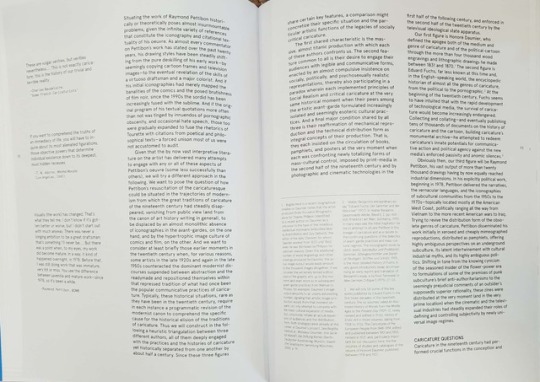


This Exhibition Catalog is titled “A Pen of all Work” Work By Raymond Pettibon. This book was published by the New Museum Exhibition. Raymond Pettibon’s work was in the New Museum, in New York from February 8- April 6 2017. This book was edited & curated by Massimiliano Gioni & Gary Carrion-Murayari. It was published in 2017 by the Phaidon Press Limited and New Museum, New York.
This book has a few different fonts, although the colophon does not specify what they are specifically. The title font is most likely a designed font for this book, and the 2 fonts at the bottom of the title page I think are specifically for the New Museum. Throughout the book there is 1 main fonts sans serif. The curators use the sans serif font for the pages with images for the captions and titles of the work, and for the essays. They use font size and weight to organize the book’s hierarchy. The curator uses a serif font on the chapter pages in 1 small section, but bedsides that the whole book is sans serif.
This book is made up of artwork by Raymond Pettibon. His artistic style is with drawing and illustrations. The audience for this book is, any lover of art who couldn’t make it to the museum to view Raymond Pettibon Exhibition.
The curators chose a very modern layout for this book, because Raymond Pettibon is a modern artist. The book includes grids with large bottom margins and centered pg. # folios. There is also a 2 column grid throughout the book. You see the grid clearly on the pages with essays and smaller images.
This book is very large 9.5″ X 11″. Which was a good idea for an Exhibition Catalog. You can read the essays without squinting and most importantly you can see the amazing artwork, a high resolution image on the full spread page.
I will use this book to influence my own work by looking at how the curators organized it, and using a large size so my viewers can see the high resolution images that I use. I will also draw inspiration from the modern layout and look at how they used the grid and follow it throughout the book.
— Sarah
0 notes
Text
Hyperallergic: Death Wish: Raymond Pettibon at the New Museum
Installation view of “Raymond Pettibon: A Pen of All Work,”, New Museum, New York (February 8-April 9, 2017) (all photos by Maris Hutchinson / EPW Studio and courtesy New Museum, New York)
The phenomenal retrospective Raymond Pettibon: A Pen of All Work at the New Museum opens with a wall chockablock with exploding nuclear bombs. Can he top that? Yes, he can.
I should start out by stating that Pettibon has always skirted the periphery of my awareness, a blip on the outer ring of the radar screen. A Sonic Youth album cover here, a high-toned gallery show there, but always, it seemed, the same MO: hermetic pronouncements scrawled across crude ink drawings, except for the occasional venture into an outsized watercolor of a tiny surfer pipelining a tidal wave, or a full-blown mural splayed across a pristine white wall. The attitude invariably felt more adolescent provocateur than sociopolitical gadfly.
A Pen of All Work, masterfully curated by Gary Carrion-Murayari and Massimiliano Gioni, blows apart every assumption and misgiving I might have harbored about this artist. Context may be everything, but content — lots of it — doesn’t hurt.
The exhibition is so large that a single floor feels like a comprehensive survey in itself — more than 800 objects across three floors according to the museum’s press release, though at the press preview Gioni put the number closer to 900, including never-before-seen juvenilia.
Installation view of “Raymond Pettibon: A Pen of All Work,”, New Museum, New York (February 8-April 9, 2017)
The most riveting floor is the fourth, where the elevator doors open on those exploding atom bombs, and the surrounding walls are littered with political drawings of unrelenting scabrousness, with particular venom reserved for Ronald Reagan, George W. Bush, and Dick Cheney (the searing Reagan drawings feel especially trenchant given the reverence accorded his corrupt, oligarchical, and blood-spattered regime, even by commentators who should know better).
But these works, with the exception of the relatively straightforward indictments of the Bush/Cheney years, do not conform to the conventional notion of political art — taking issue with policies and raising awareness of abuse. Rather, the overtly political pieces glide along a plane somewhere between history painting and stream-of-consciousness poetry.
One of the first pieces to capture my attention was a blocky ink drawing of John F. Kennedy, gazing into the distance and vapidly smiling, with an inscription above his head that reads “KENNEDY WOULD DIE ALL RIGHT.”
What could that mean? The ambiguity conjoining word and image turns the experience of looking at Pettibon’s work into an interior journey on the part of the viewer, weaving through a weirdly sensual middle ground between thought and emotion.
Pettibon’s drawings arise from his encyclopedic reading. There’s a display on the second floor of torn out, annotated, photocopied, and cut up pages from books, newspapers, magazines, and other ephemera, whose texts he copies, edits, and adapts for his unattributed verbal streaks of indirection, invective, irony, and impertinence.
The impossibility of knowing where most of his references come from leaves us off the hook — we needn’t know anything more than what we see in front of our eyes, since the link between inspiration and image has been unplugged. Even Benjamin H.D. Buchloh, in an essay for the exhibition’s catalogue, states, “Situating the work of Raymond Pettibon historically or theoretically poses almost insurmountable problems, given the infinite variety of references that constitute the iconography and citational textuality of his oeuvre.”
But those references, once extracted, accumulate into a distinct worldview that, from the evidence presented by this show, employs pulp imagery not to parody its source or to undermine fine art conventions, but to underscore the self-destructive instincts that film noir, horror comics, and pornography throw into high relief.
Through avatars in the form of Charles Manson and Patty Hearst (along with such repurposed characters as Superman, Batman, and Gumby) Pettibon, in image after image, explores the fatal human proclivity to manipulate and be manipulated, to play predator and prey, all in the service of the basest psychosexual, violent, and suicidal urges.
Installation view of “Raymond Pettibon: A Pen of All Work,”, New Museum, New York (February 8-April 9, 2017)
The freewheeling ferocity with which the artist savages the hypocrisy, mendacity, and stupidity of political leaders, it can be argued, is as much an attack on the politicians per se as it is an interrogation of the Thanatos-driven impulses that compel us to empower those leaders in the first place.
An exception, within the scope of this show, is our sitting president. There are only a couple of Trump drawings in the exhibition, made on either side of the 30-year spread spanning his noteriety, one from 1986 and the other from 2016.
The earlier drawing, a hard-to-decipher brush-and-ink sketch of what I assume to be the back of his head framed against a moonlit cityscape, bears the inscription, “A CERTAIN DONALD TRUMP: THE FIRST REAL GENTLEMEN I’D MET IN YEARS.”
The more recent image, a clunky likeness in acrylic and ink with a collaged speech balloon (“YR HIR’D,” complete with arrows pointing back at himself), was evidently made during the primary debates.
Compared to the scorched-earth takedowns of Reagan and Bush/Cheney, it’s a bland, even benign image, though I can only imagine the truckloads of merciless new Trump drawings tumbling from the artist’s studio in the months since the selections for this retrospective were made.
But maybe that’s a false expectation. The Reagan drawings, at least those presented here, weren’t made during his time in office but over the two decades that followed, and most of the Bush/Cheney images are dated late in the second term or afterward.
Of course, due to Pettibon’s staggering prolificacy (Gioni remarked that these 900 items were chosen from 5,000 out of a potential pool of 20,000), it is impossible to state anything with assurance, but the retro aspect of Kennedy, Manson, Hearst, and Gumby, to name a few, implies that a significant degree of historical distance is required for the kind of indirection we encounter in the most effective pieces on display.
That is why I described the work in terms of stream-of-consciousness poetry and history painting. It takes an absurd path toward the long view. Pettibon’s words are not his own but a transformation of a wealth of literature of every rank and genre. This is a distinctive and compelling use of appropriation — not the repurposing of an existing work in the interests of glibness or irony, but a scooping-up of communal gray matter that is by definition greater than oneself.
At the same time, the imagery and stylistic tropes that Pettibon gleans from historically tawdry sources — modes of expression specializing in abjection, violence, and despair — collide with his multilayered and sometimes lofty inscriptions, amassing a combinatory force that lands a punch to the head again and again.
The contradictions inherent in Pettibon’s art spread a gossamer film of transcendence over the poison that has been leaching from the body politic since the 1960s. In doing so, it maps the contours of our culture and delivers a credible accounting of the sinking horror and glimmers of hope that stream toward us from the newsfeed day in and day out.
Raymond Pettibon: A Pen of All Work continues at the New Museum (235 Bowery, Lower East Side, Manhattan) through April 9.
The post Death Wish: Raymond Pettibon at the New Museum appeared first on Hyperallergic.
from Hyperallergic http://ift.tt/2kTdb5S
via IFTTT
0 notes
Text
Softly singing “Songs for Sabotage”
Contributed by Sharon Butler / “Songs for Sabotage,” the 2018 iteration of the New Museum Triennial, curated by Gary Carrion-Murayari and Francesca Altamura of the New Museum, and Alex Gartenfeld of the Institute of Contemporary Art in Miami, features elegantly installed, dimly-lit work by an international group of artists. Many of them have interdisciplinary practices comprising performance, installation, and more, … read more... "Softly singing “Songs for Sabotage”"
0 notes
Text
Softly singing “Songs for Sabotage”
Contributed by Sharon Butler / “Songs for Sabotage,” the 2018 iteration of the New Museum Triennial, curated by Gary Carrion-Murayari and Francesca Altamura of the New Museum, and Alex Gartenfeld of the Institute of Contemporary Art in Miami, features elegantly installed, dimly-lit work by an international group of artists. Many of them have interdisciplinary practices comprising performance, installation, and more, … read more... "Softly singing “Songs for Sabotage”"
0 notes
Text
Softly singing “Songs for Sabotage”
Contributed by Sharon Butler / “Songs for Sabotage,” the 2018 iteration of the New Museum Triennial, curated by Gary Carrion-Murayari and Francesca Altamura of the New Museum, and Alex Gartenfeld of the Institute of Contemporary Art in Miami, features elegantly installed, dimly-lit work by an international group of artists. Many of them have interdisciplinary practices comprising performance, installation, and more, … read more... "Softly singing “Songs for Sabotage”"
0 notes
Text
Softly singing “Songs for Sabotage”
Contributed by Sharon Butler / “Songs for Sabotage,” the 2018 iteration of the New Museum Triennial, curated by Gary Carrion-Murayari and Francesca Altamura of the New Museum, and Alex Gartenfeld of the Institute of Contemporary Art in Miami, features elegantly installed, dimly-lit work by an international group of artists. Many of them have interdisciplinary practices comprising performance, installation, and more, … read more... "Softly singing “Songs for Sabotage”"
0 notes